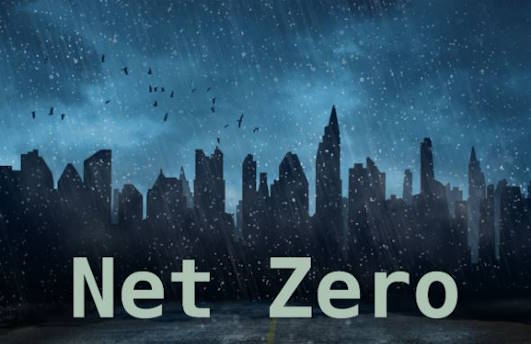
Biden White House readies national Net-Zero emissions building initiative
By Bonner Cohen, Ph.D.
Residential and commercial buildings throughout the United States are in the bull’s eye of a White House plan “intended to help move the building sector to net-zero emissions.”
A “pre-decisional” draft quietly circulating since December outlines the vast scope of an initiative aimed at nothing less than the decarbonization of one of the nation’s largest economic sectors. https://www.energy.gov/sites/default/files/2024-01/bto-national-definition-zero-emissions-building-122023.pdf
“A broadly accepted minimum definition of a zero-emissions building, as well as a pathway for documentation, is foundational to efforts by public and private entities to transition the building sector to zero greenhouse gas emissions,” the draft states. “The intent of the National Definition of a Zero Emissions Building is to create a standardized, consistent, measurable basis for zero emissions buildings.”
“This clear market signal and consistent target, backed by measurable data, is intended to help move the building sector to zero emissions,” the White House draft continues. “The definition may serve as a framework that users can achieve through multiple pathways to influence the design and operation of buildings to substantially reduce building sector emissions.”
And which buildings are to be included in this definition? “This definition can be applied to existing buildings and to new construction of non-federally owned buildings,” the White House explains. “The definition applies to whole building operational emissions, including those from tenants.”
To meet the administration’s net-zero emissions criteria, a building must be highly energy efficient, free of on-site emissions from energy use, and powered solely from “clean energy,” defined as “carbon-free sources.”
Verification of each building’s compliance with the zero-emissions regime is a key element of the Biden program. “EPA’s ENERGY STAR Portfolio Manager will generate standardized documentation that can be independently verified through licensed professionals and/or third-party certification bodies or others as determined by organizations using the zero-emissions building definition.”
A Roadmap to Control
Anyone wishing to know how the administrative state seizes power needs look no further than the White House’s net-zero building emissions plan. It starts with a “broadly accepted minimum definition of a zero-emissions building … to transition the building sector to zero greenhouse gas emissions.” The White House fails to say by whom the definition is “broadly accepted” but quickly moves on to a scheme that will put the federal government in every building – existing and not yet constructed – in every community in the country.
Several well-trodden pathways are at its disposal, including regulation of fossil-fuel sources of energy that might otherwise make their way into buildings. Another is EPA’s ENERGY STAR Portfolio Manager, who is accountable to absolutely no one but nevertheless has the power to generate standardized documentation that can be “independently verified” by third parties with a financial stake in the net-zero program. The White House draft places no restrictions on the size of the buildings subject to the program, meaning even smaller structures could fall under its net.
Building Codes
The administration’s move comes amid a nationwide fight — playing out in such places as North Carolina, Michigan, and Idaho — over efforts to adopt “climate-friendly” building codes at the state and local levels. Climate advocates, often under the banner of energy efficiency, demand that building codes for homes be updated to include thicker insulation, super airtight windows, and upgraded wiring to accommodate all-electric appliances and in-home chargers for EVs.
With home prices already at record-high levels, the 140,000 members of the National Association of Home Builders (NAHB) are mobilizing against state and local efforts to enact what are said to be more energy- efficient building codes for residences. Last year, NFIB’s North Carolina affiliate successfully lobbied against a Tarheel State plan to tighten energy efficiency standards designed to lower the carbon footprint of residential buildings. Ron Jackson, a home builder in predominantly rural Moore County, worried that the code would put the affordable housing he specializes in out of reach for nurses, police officers, and teachers.
“All that energy code was going to do in my price range is make it where the working man and woman would not be able to buy a home,” he told The Washington Post (Feb. 25). Jackson, who sells homes in the $250,000 range, cited figures from NAHB’s North Carolina affiliate, saying the code would add $20,000 to the price of such a home. https://www.washingtonpost.com/climate-environment/2024/02/21/homebuilders-energy-efficiency-climate/
What the White House says is merely a “definition” of a zero-emission building won’t stay a definition for long. It will be a launching pad for regulations – ideally at the federal, state, and local levels – that mandate which materials can go into a green building. Politically connected purveyors of those materials stand to profit handsomely from this arrangement.
On the other hand, prospective home buyers, particularly those on a tight budget, will ultimately pay the price exacted by the administrative regulatory state and its partners, the climate cartel.
From cfact.org